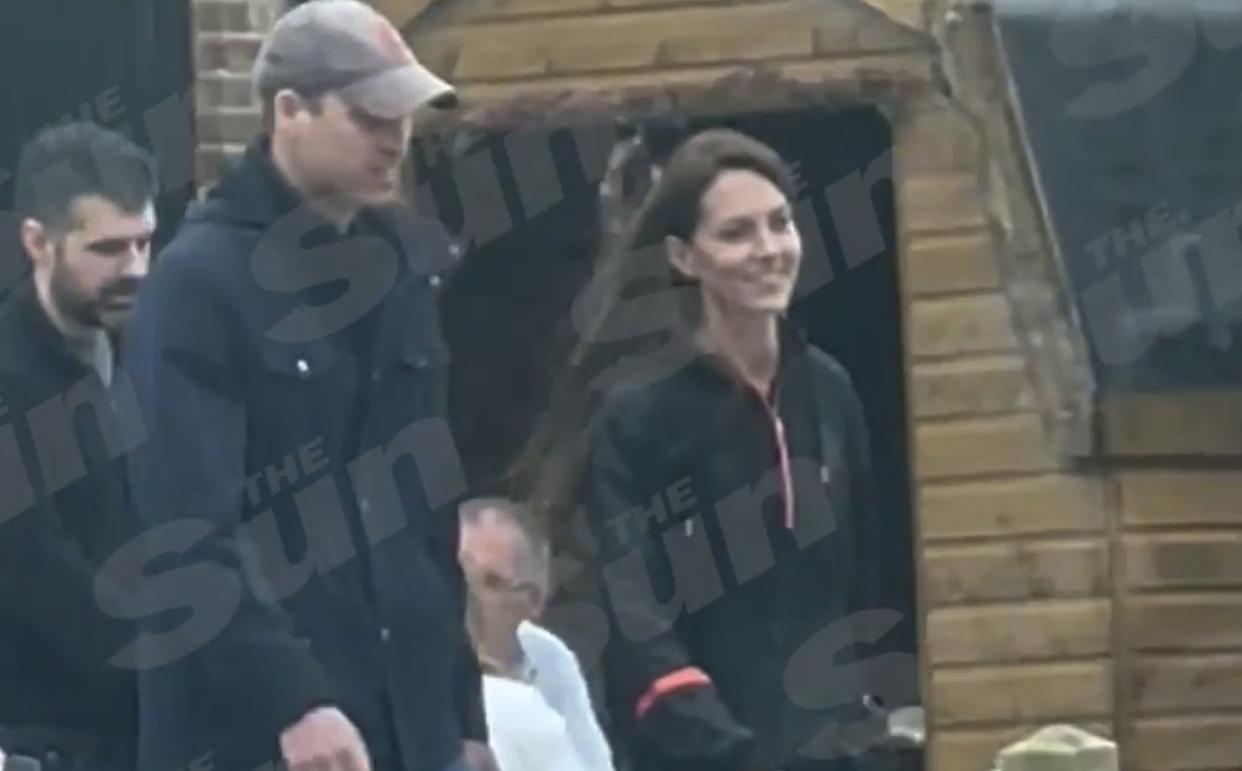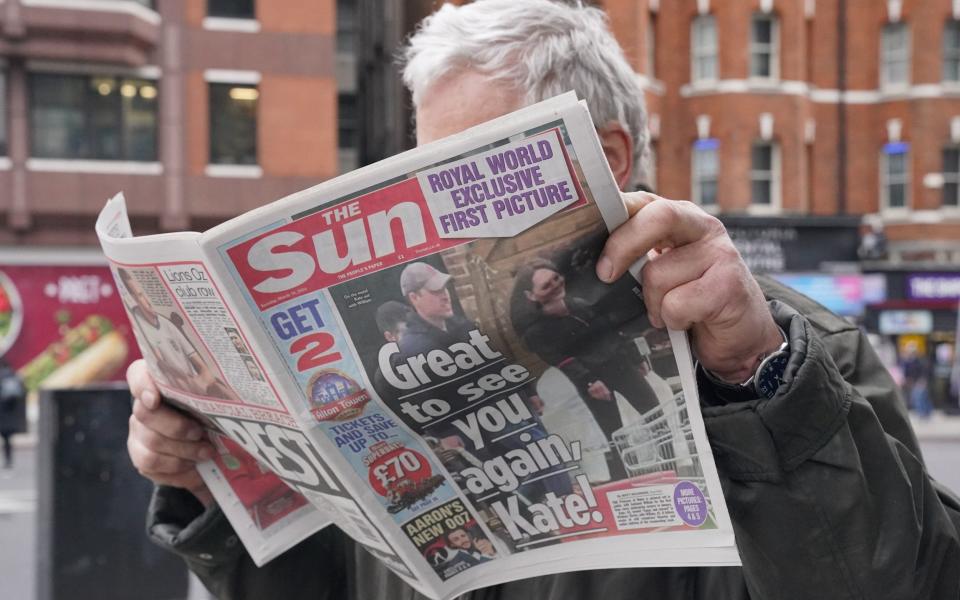Palace has lost control of the Princess of Wales narrative – here’s the picture that shows how

For weeks, the cry has gone up from the internet trolls: “Show us proof of life! Where is Kate Middleton?”
Now they have it. A video, taken by a member of the public, showing the Prince and Princess of Wales leaving the Windsor Farm Shop has been published online, capturing her looking happy, busy and on the mend from surgery.
Ordinary people who felt a twinge of curiosity about her absence from public life will watch, smile and move on, looking forward to the Princess’s return to work at some point after Easter.
But on the internet, the social media conspiracy theorists have doubled down. It must be a body double, they screamed; she looks too well. Even the rustic-themed decorations outside the shop were cause for suspicion, they claimed; it “must have been” taken not on Saturday but at Christmas.
The publication of metadata showing the video was taken exactly when and where it is said to have been taken was not enough to satisfy them.
Even those who believe it is the Princess have used it to pile on the criticism about why she has not yet got back to work, seemingly unaware that walking a short distance from car to shop is not quite the same as returning to work in formal wear, with microphones ready to broadcast any passing comment around the world.

“She could do a DNA test and people wouldn’t believe it’s her,” said Jack Royston, chief royal correspondent at Newsweek.
At this point, the Princess and the palace simply cannot win. The rules that govern the press, some written in the form of privacy laws and some unwritten based on decency and common sense, have, for now, fallen.
The media’s relationship with the palace was drastically redrawn in the wake of the death of Diana, Princess of Wales, shedding the excesses of the paparazzi and pouring a shock of cold water over the public’s insatiable appetite for royal gossip.
More than a quarter of a century on, as a new generation hounds the new Princess of Wales digitally, those lessons do not seem to have been passed on.
The paparazzi have been swapped for mobile phone cameras, the columnists supplanted by endless online royal “experts” with clickbait at their fingertips, but the sentiment – that the Princess is up for discussion without boundary – remains the same.
Kensington Palace has put up a running fight for the Princess’s privacy since she disappeared from public view in mid- January after abdominal surgery.
Confirming she would be off duty while she recovered, her spokesman said outright: “The Princess of Wales appreciates the interest this statement will generate. She hopes that the public will understand her desire to maintain as much normality for her children as possible; and her wish that her personal medical information remains private.”
It did hold, for a while.
But the absence of Prince William from a church service for “personal reasons”, followed by that doctored Mother’s Day photograph, have crushed any semblance of palace control.
The behemoth that is TMZ in America, the ungovernable mass of X and Tiktok, and the unregulated gossip sites have run riot.
The British tabloids, which demurred at running a paparazzi photograph of the Princess in a car with her mother just two weeks ago, have run front-page photographs of her outing to the farm shop.
Even the BBC has shown the pictures, using the newspaper front pages to discuss it.
There are only so many times palace sources can repeat frustrated pleas for privacy and calm. They have lamented the “madness of social media” behind the scenes, repeating the Princess’s own request for privacy ad nauseam.
Not long ago, that would have been enough to rein things in.
But pleas for decency rely on people being decent. In the online post-truth era, not to mention the febrile narrative of the post-Megxit, post-Spare, post-Queen Elizabeth II era, that no longer always applies.
There is a school of thought that says the furore has done the Princess a favour. A video from a named member of the public, who has already spoken out to quash conspiracy theories, shows her looking happy, back on her feet after surgery and in conversation with her husband.
The Windsor Farm Shop is very close to their house, where locals either barely bat an eyelid at seeing the Waleses drop in or are too self-consciously polite to be seen to do so.
So far so normal.
The Sun, which along with TMZ won a bidding war for the video, explained the motive for publishing it thus: “We are showing the images today in a bid to end weeks of online speculation which has seen wild conspiracy theories about Kate spread unchecked.”
Prince William and Kate knew they would be seen there, royal watchers have claimed, speculating their staff should be “pleased” or at least “relieved” that the Princess has finally been seen in such an ordinary way without the signs of paparazzi in pursuit.
Aides have stopped short of issuing an on-record statement tackling things head-on.
The printing of the farm shop photograph, said Peter Hunt, the BBC’s former royal correspondent, was a “powerful reminder of the symbiotic relationship enjoyed by the royals and the media”.
“A clear breach of privacy,” he claimed. “Kensington Palace is silent.”
Behind the scenes, Kensington Palace is in transition, with two new private secretaries settling in just as their bosses are living through a crisis.
With former and current advisers on hand to help, the team is gearing up for an “after Easter” return to the fray on the Princess’s terms, as and when she feels well enough.
There has been no more pressing moment to plan: not just the logistics of her return but to rethink a communications strategy fit for the internet generation.
Just as the Royal family had to adapt to the advent of radio and television, and then the explosion of celebrity paparazzi culture in the 1980s and 1990s, a new approach is needed in the age of social media. Like it or not, it’s not going anywhere.


